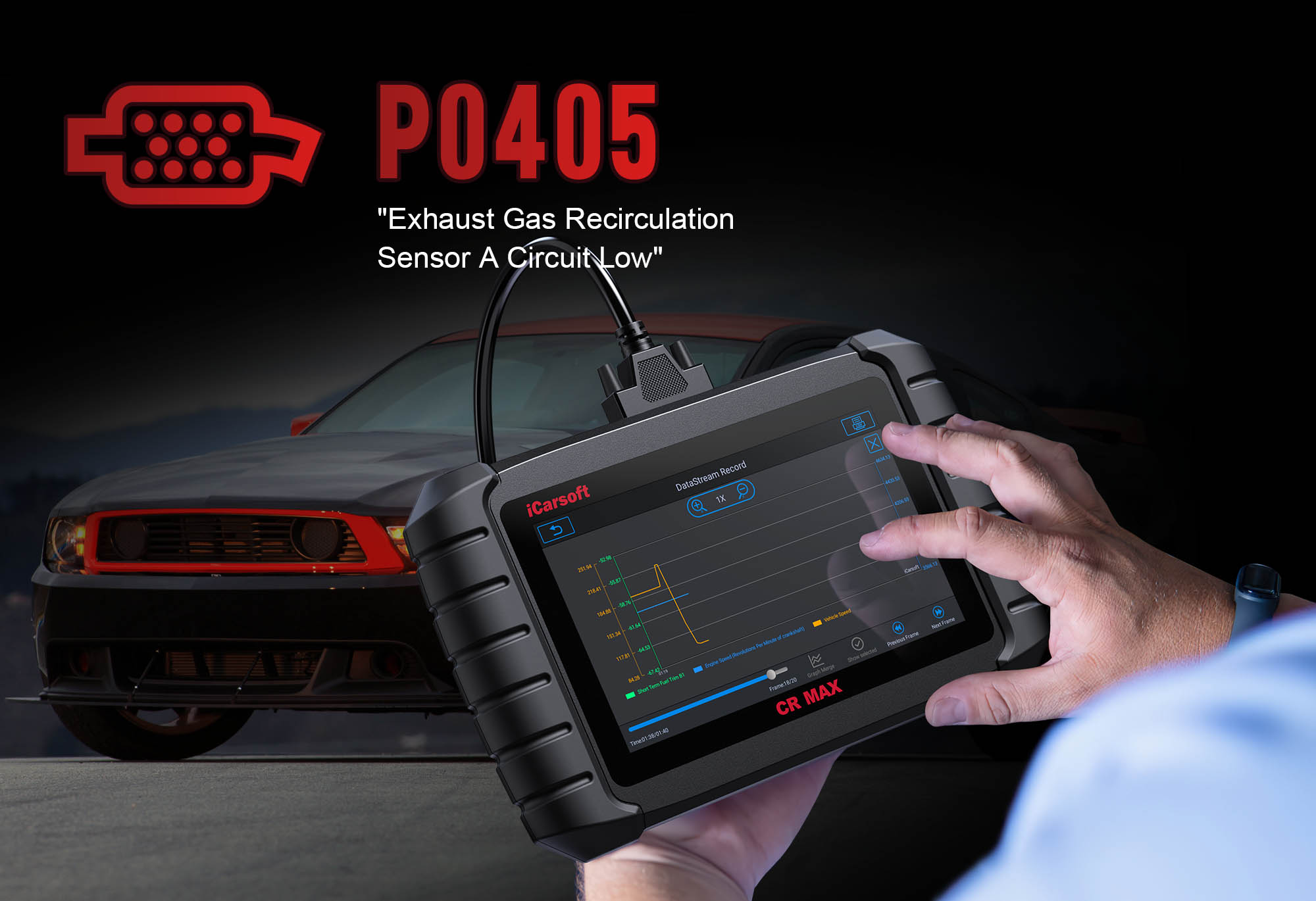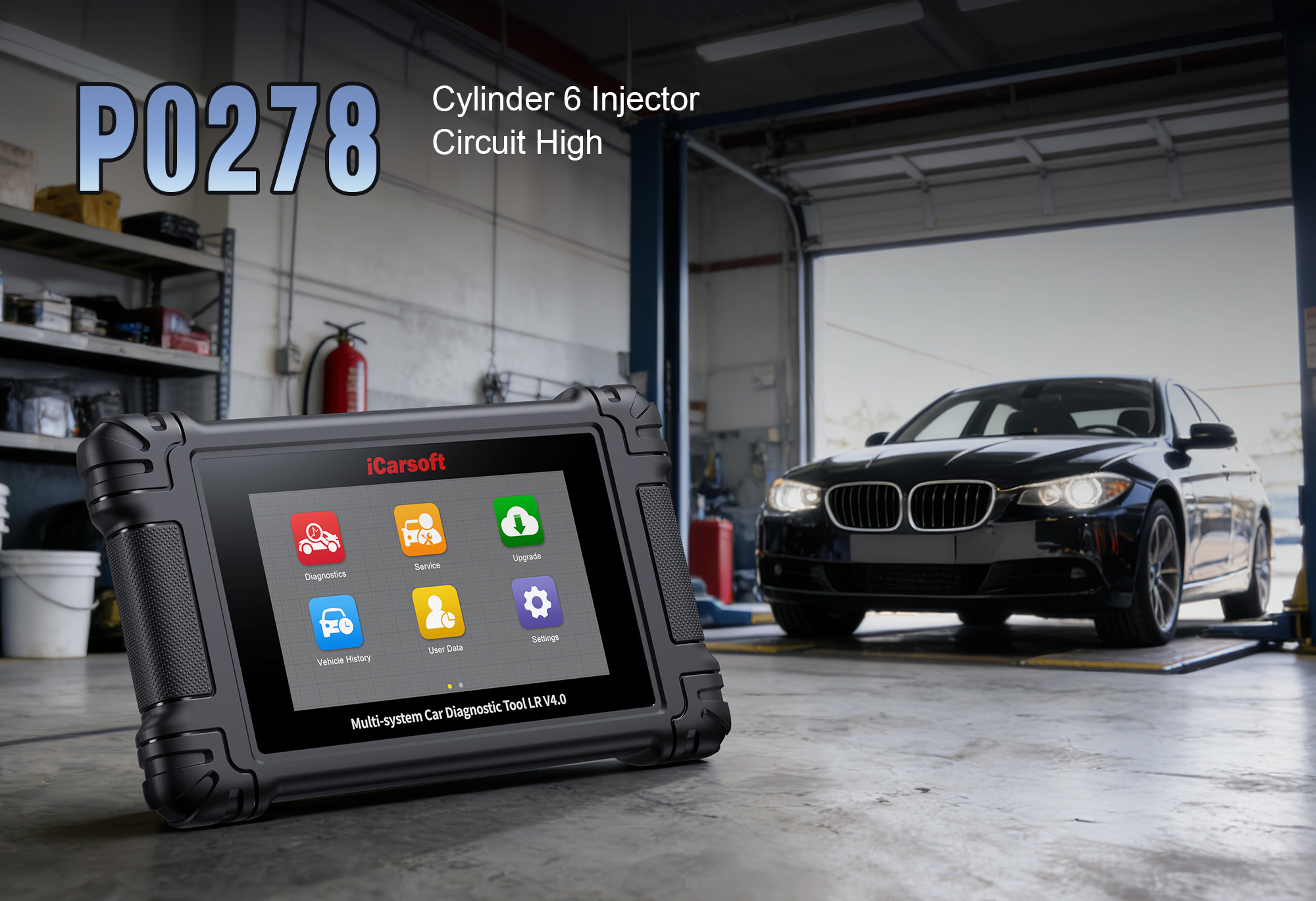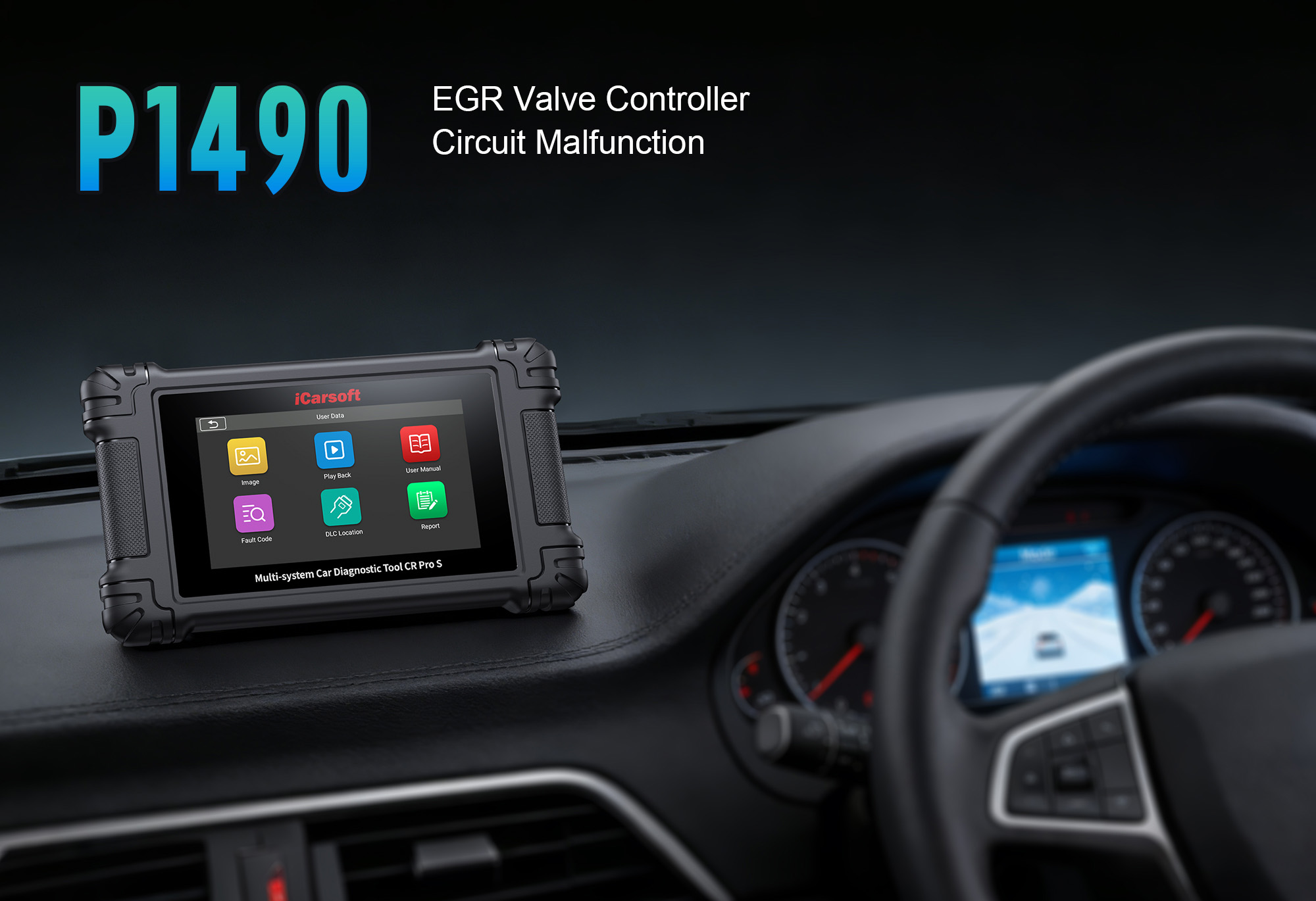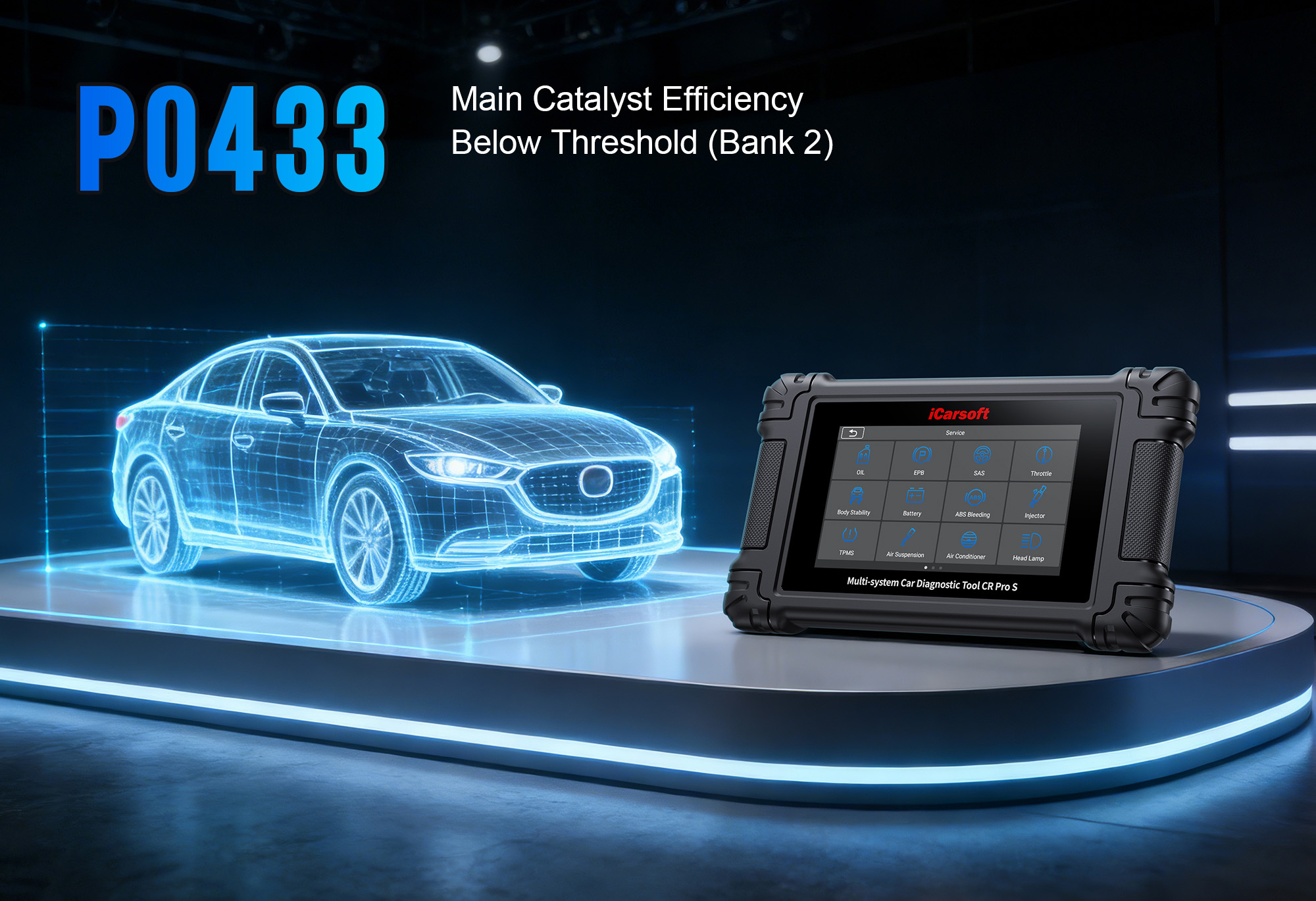Decoding the P0405 Error Code: Causes, Symptoms, and Solutions
For car owners, a glowing Check Engine Light is a clear sign something’s off—and the P0405 code is a common culprit tied to the Exhaust Gas Recirculation (EGR) system. This code signals a “low voltage” fault in the EGR sensor circuit, which can harm emissions, fuel economy, and engine performance if ignored. In this guide, we’ll break down what P0405 means, its causes and symptoms, step-by-step fixes, and how the iCarsoft CR MAX simplifies diagnosis.
What is the P0405 Error Code?
The P0405 error code is defined as “Exhaust Gas Recirculation (EGR) Sensor A Circuit Low”. It triggers when the vehicle’s Engine Control Module (ECM) detects that the voltage signal from the EGR position sensor falls below the manufacturer’s normal range (typically 0.5V–4.5V for most vehicles).
Here’s why this matters: The EGR position sensor monitors the opening/closing position of the EGR valve and sends voltage signals to the ECM. The ECM uses this data to adjust EGR flow—ensuring optimal emissions control. A “low circuit” fault means the sensor is sending too little voltage, so the ECM can’t trust the data to regulate the EGR system properly.
The Role of the EGR System
To understand why P0405 matters, let’s first recap the EGR system’s critical function:
-
Emissions Reduction: The EGR system reduces harmful nitrogen oxide (NOx) emissions—pollutants that form at high combustion temperatures.
-
How It Works: It recirculates a small portion of exhaust gas back into the intake manifold. This dilutes the air-fuel mixture, lowering peak combustion temperatures and limiting NOx formation.
-
Sensor-Volume Connection: The EGR sensor tells the ECM how much the valve is open/closed. If the sensor’s signal is too low, the ECM may overcompensate (e.g., keeping the valve open too long) or shut down EGR flow entirely—disrupting emissions control and engine performance.
Symptoms of the P0405 Error Code
P0405 symptoms range from obvious (Check Engine Light) to subtle (reduced MPG). Catching these early prevents worse issues like emissions test failure:
Illuminated Check Engine Light
The most consistent symptom— the light stays on until the code is cleared and the fault is fixed.
Failed Emissions Test
Without proper EGR flow, NOx emissions spike—causing your vehicle to fail state or local emissions tests.
Decreased Engine Performance
Sluggish acceleration, especially at highway speeds; the engine may feel “unresponsive” when pressing the gas.
Poor Fuel Economy
Disrupted EGR flow upsets the air-fuel mixture, lowering MPG by 8–12% (you’ll visit the gas station more often).
Engine Misfires/Rough Idle
Incorrect EGR flow can flood the combustion chamber with exhaust gas (or starve it), causing idle fluctuations (500–900 RPM) or misfires at low speeds.
Causes of the P0405 Error Code
P0405 stems from issues that reduce the EGR sensor’s voltage signal. Below are the most frequent culprits, ordered by likelihood:
Faulty EGR Position Sensor
The top cause—internal electrical failure (e.g., broken windings) or sensor wear causes it to output voltage below the normal range.
Damaged Wiring/Connectors
Frayed wires, corroded connectors, or loose terminals disrupt power to the sensor. A short to ground (e.g., wire touching metal) also pulls voltage down.
Clogged/Stuck EGR Valve
Carbon buildup clogs the valve, preventing it from moving. The sensor misreads the stuck position, sending low voltage to the ECM.
EGR Valve Vacuum Leaks
Leaks in the EGR valve’s vacuum line or diaphragm cause the valve to stick. The sensor detects the abnormal position, triggering P0405.
Malfunctioning ECM (Rare)
A faulty ECM may misinterpret normal sensor voltage as “low”—fixed with a manufacturer software update or, in extreme cases, ECM replacement.
Diagnosing the P0405 Error Code with iCarsoft CR MAX
Basic scanners only read P0405—they can’t distinguish between a faulty sensor, wiring, or valve. The iCarsoft CR MAX uses EGR-specific tools to pinpoint the root cause quickly:
-
Connect the CR MAX & Retrieve Codes
-
Plug the CR MAX into your vehicle’s OBD-II port (under the dashboard), power it on, and select your make/model/year. Use AutoVIN Recognition to skip manual entry—critical for EGR system specs.
-
Navigate to Engine Control Module > Fault Codes > Read Codes to confirm P0405. Check for related codes (e.g., P0401 for “EGR Flow Insufficient,” P0404 for “EGR Circuit Range/Performance”)—these narrow down the issue.
-
Analyze Live EGR Sensor Data
Confirm if the sensor is truly sending low voltage:
-
Go to Engine > Live Data > EGR System and select “EGR Position Sensor Voltage.”
-
Start the engine and let it idle—normal voltage should stay between 0.5V–4.5V. If it’s below 0.5V (or manufacturer’s spec), the sensor or circuit is faulty.
-
Accelerate gently—voltage should rise as the EGR valve opens. No change = stuck valve or faulty sensor.
-
Run Bi-Directional EGR Valve Tests
Test if the EGR valve and sensor work together:
-
Navigate to Special Functions > EGR Tests > Valve Actuation.
-
Command the EGR valve to “Open” (25%, 50%, 100%) and “Close”—watch the live sensor voltage:
-
If voltage rises when the valve opens = sensor is good (issue is elsewhere).
-
If voltage stays low = faulty sensor or wiring.
-
If the valve doesn’t move = stuck valve or vacuum leak.
-
Locate the EGR Sensor & Inspect Components
-
Use the CR MAX’s Component Location guide to find the EGR sensor (usually mounted on or near the EGR valve).
-
Visually inspect:
-
Sensor: Check for cracks, oil residue, or physical damage.
-
Wiring/Connectors: Look for frayed wires, corroded pins, or loose terminals. Clean connectors with electrical contact cleaner.
-
EGR Valve: Check for carbon buildup around the valve opening (sign of clogging).
-
Test Sensor Resistance (with CR MAX Multimeter)
-
Disconnect the EGR sensor’s electrical connector.
-
Set the CR MAX to Multimeter > Resistance Test.
-
Connect probes to the sensor’s signal and ground pins (use the CR MAX’s Wiring Diagram for pinouts). Normal resistance ranges from 10–30 ohms (check your vehicle’s spec).
-
Results: Infinite ohms = open circuit (faulty sensor); 0 ohms = short circuit (faulty sensor).
Fixing the P0405 Error Code
Once you’ve pinpointed the cause with the CR MAX, use these targeted fixes:
-
Replace the Faulty EGR Sensor
-
Disconnect the sensor’s electrical connector and remove the mounting bolts (use a socket wrench).
-
Install a new OEM-compatible EGR sensor (use the CR MAX’s Part Lookup to find the correct part).
-
Torque the bolts to manufacturer specs (usually 8–12 ft-lbs) to avoid damaging the sensor.
Pro Tip: Apply a small amount of anti-seize compound to the sensor’s threads (if metal) to prevent corrosion—this makes future removal easier.
-
Repair Damaged Wiring/Connectors
-
For Frayed Wires: Cut out the damaged section, strip 1/4-inch of insulation from the ends, and splice in new wire (use heat-shrink tubing to seal the connection).
-
For Corroded Connectors: Replace the connector if pins are bent/broken. For minor corrosion, clean with electrical contact cleaner and apply dielectric grease to prevent moisture damage.
-
Secure loose wiring with zip ties to avoid contact with hot engine parts.
-
Clean or Replace the EGR Valve
If carbon buildup is the issue:
-
Remove the EGR valve (disconnect vacuum lines and mounting bolts—follow the CR MAX’s disassembly guide).
-
Soak the valve in EGR cleaner (avoid harsh carburetor cleaner, which damages plastic components) for 15 minutes.
-
Scrub carbon deposits from the valve pintle (small metal rod) and seat with a soft-bristle brush.
-
Reinstall the valve—if it’s still stuck after cleaning, replace it with an OEM part.
-
Fix EGR Vacuum Leaks
-
Inspect vacuum lines for cracks or dry rot—replace any damaged lines with OEM-grade rubber hose.
-
Test the EGR valve diaphragm: Apply vacuum to the valve (use a hand vacuum pump)—it should hold vacuum for 30 seconds. If it leaks, replace the valve.
-
Check the ECM (Last Resort)
-
Use the CR MAX to check for ECM Software Updates (under Special Functions > Vehicle Info > TSB Lookup). Outdated firmware often causes false P0405 codes.
-
If updates don’t work, consult a professional mechanic. They’ll use specialized tools to test the ECM’s ability to read the EGR sensor signal.
-
Reset the Code & Verify Repairs
-
Use the CR MAX to Clear Codes (under Fault Codes > Clear Codes)—this turns off the Check Engine Light.
-
Start the engine and let it idle for 5 minutes—monitor live EGR sensor voltage (should stay in normal range).
-
Take a 30-mile test drive (include city and highway driving) with the CR MAX’s Data Logging enabled.
-
Re-scan after driving: No P0405 + stable sensor voltage = fix successful.
Why Choose the iCarsoft CR MAX for P0405 Diagnosis?
The CR MAX stands out from basic scanners by focusing on EGR system-specific diagnostics:
Live EGR Sensor Voltage Monitoring
Spots low voltage in real time—no guessing if the sensor is faulty.
Bi-Directional Valve Control
Manually actuate the EGR valve to test sensor response—isolates sensor vs. valve issues.
Vehicle-Specific Guides
Preloaded with EGR sensor/valve locations, wiring diagrams, and resistance specs for 10,000+ models.
Built-In Multimeter
Tests sensor resistance and wiring continuity—no separate tools needed.
Summary Table: P0405 Diagnosis & Fix Steps
|
Step
|
Action
|
|
1
|
Connect CR MAX & retrieve P0405 + related codes
|
|
2
|
Monitor live EGR sensor voltage (check for <0.5V)
|
|
3
|
Run bi-directional test to actuate EGR valve & test sensor response
|
|
4
|
Inspect EGR sensor, wiring, and valve for damage/buildup
|
|
5
|
Test sensor resistance with CR MAX multimeter
|
|
6
|
Replace sensor/wiring/valve as needed; reset code & test drive
|
Conclusion
The P0405 code may seem technical, but it’s a manageable fix with the right tools and knowledge. By focusing on the EGR sensor, wiring, and valve (the most common causes), and using the iCarsoft CR MAX to avoid guesswork, you can resolve the issue quickly.
Remember: Promptly fixing P0405 prevents emissions test failures, improves fuel economy, and protects your engine from unnecessary wear. If you’re uncomfortable with DIY repairs, a professional mechanic can use the CR MAX’s diagnostic data to confirm the issue in minutes.
With the iCarsoft CR MAX, P0405 goes from a confusing code to a clear, fixable problem—getting your vehicle back to efficient, emissions-compliant operation in no time.





